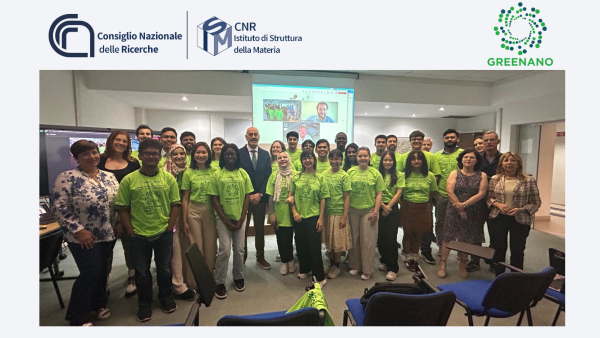As part of the Erasmus Mundus Joint Master’s program 'GREENANO', dedicated to the development of nanomaterials for the green and digital transitions, the GREENANO Summer School began on June 3, 2025, at CNR-ISM and will conclude on June 17. It offers an outstanding educational opportunity for international students.
Participants will engage with cutting-edge laboratory tools and advanced theoretical simulations. The curriculum includes the study of self-assembly and on-surface synthesis of organic nanostructures, as well as the fabrication of solar cells and chemical sensors. Key theoretical concepts will be introduced through seminars and explored further through hands-on experiments.
The first week will focus on the preparation and characterization of photovoltaic cells at the CHOSE laboratory. At the CNR-ISM SpecX lab, students will analyze the structural and morphological properties of active materials. They will build and characterize a DSSC solar cell and experience the “real-life CHOSE” environment by working alongside researchers on the fabrication and analysis of perovskite and other hybrid or organic optoelectronic devices.
In the second week, students will synthesize organic nanostructures on single-crystal metal surfaces and simulate their properties using density functional theory (DFT) methods. Experimental work will take place in ultra-high vacuum (UHV) environments, employing scanning tunneling microscopy (STM) and low-energy electron diffraction (LEED). Theoretical simulations will support the interpretation of STM and XPS data and provide atomic-level insights into the structural and electronic properties of metal-organic interfaces.
The third week will conclude with a three-day visit to the Elettra Laboratory in Trieste, where students will tour the Elettra synchrotron and the Fermi free-electron laser sources. They will also participate in two days of hands-on training on four different beamlines, applying various spectroscopic techniques.


 English (UK)
English (UK)  Italiano (Italia)
Italiano (Italia)